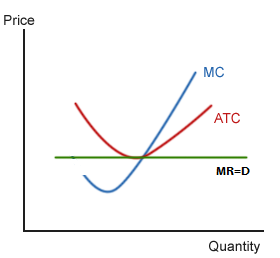Business decision making is essentially a process of selecting the best out of alternative opportunities open to the firm. The steps below put managers analytical ability to test and determine the appropriateness and validity of decisions in the modern business world. Following are the various steps in decision making process: Establish objectives Specify the decision problem Identify the alternatives Evaluate alternatives Select the best alternatives Implement the decision Monitor the performance Modern business conditions are changing so fast and becoming so competitive and complex that personal business sense, intuition and experience alone are not sufficient to make appropriate business decisions. It is in this area of decision making that economic theories and tools of economic analysis contribute a great deal. Basic Economic Tools in Managerial Economics for Decision Making Economic theory offers a variety of concepts and analytical tools which can be of considerable assistance to the managers in his Continue reading
Economics Concepts
Demand Curve under Different Market Structures
Firm Demand (company demand) denotes the demand for the product/s of a particular firm. While Industry demand means the demand for the product of a particular industry. An industry comprises all the firms or companies producing similar products which are quite close substitutes to each other irrespective of the differences in their brand names. To understand the relation between company and industry demand necessitates an understanding of different market structures. The demand curve of an individual firm is not the same as the industry or market demand curve except in case of monopoly. Monopoly is that market category in which there is only a single seller and therefore there is no difference between a firm and an industry. The firm is itself an industry and therefore the demand curve of the individual firm as well as the industry demand curve under monopoly will be the same and as we shall Continue reading
Three Concepts of Poverty – Economic wellbeing, Capability, and Social Exclusion
Poverty – A Multidimensional Phenomenon Poverty has many faces, and multiple indicators are used to capture the different deprivations experienced by a population. This complex phenomenon is linked to economic wellbeing, capability, and social exclusion. Poverty is a major moral problem because of the suffering it causes and the disadvantages conferred to some population segments. It is defined as a persistent and debilitating social condition attributed to diverse causes that affect a person’s physical, mental, and emotional wellbeing. The complex nature of poverty means that multiple measures are used depending on a country’s priorities. 1. Economic Wellbeing Income and consumption are key quantifiable indicators of poverty in society. These variables measure economic wellbeing and contain absolute, relative, and subjective components. At the basic level is absolute poverty, which describes the lack of necessities needed for survival – shelter, clean water, and food. Here, the quality of survival is an important Continue reading
Expert Opinion Method of Demand Forecasting
In this method of demand forecasting, the firm makes an effort to obtain the opinion of experts who have long standing experience in the field of enquiry related to the product under consideration. If the forecast is based on the opinion of several experts then the approach is called forecasting through the use of panel consensus. Although the panel consensus method usually results in forecasts that embody the collective wisdom of consulted experts, it may be at times unfavorably affected by the force of personality of one or few key individuals. To counter this disadvantage of panel consensus, another approach is developed called the Delphi method. In this method a panel of experts is individually presented a series of questions pertaining to the forecasting problem. Responses acquired from the experts are analyzed by an independent party that will provide the feedback to the panel members. Based on the responses of Continue reading
Supply Side Policies – Meaning, Definition, and Categories
The supply side policies entail the attempts undertaken by governments in an effort to stimulate productivity and ensure that the long-term aggregate supply [LRAS] curve shifts to the right as illustrated in graph 1 below. The outward shift of the LRAS curve leads to an increase in the potential output. From the graph, the shift in the LRAS to LRAS2 leads to an increase in the size of the output from Y1 to Y2. The supply side policies are focused on stimulating a country’s productive capacity. Labor productivity is one of the most important elements in the supply side policies. The policies underscore the importance of establishing flexible labor markets. Despite the flexibility aspect, the role of the government in the implementation of the supply side policies cannot be ruled out. In some instances, government intervention is necessary in order to overcome market failure. The objective of the supply side Continue reading
Profit Maximization Model in Managerial Economics
Profit-making is one of the most traditional, basic and major objectives of a firm. Profit-making is the driving-force behind all business activities of a company. It is the primary measure of success or failure of a firm in the market. Profit earning capacity indicates the position, performance and status of a firm in the market. It is an acid test of economic ability and performance of an individual firm. There is no place for a firm unless it earns a reasonable amount of profit in the business. It is necessary to stay in business and maintain in tact the wealth producing agents. It is a widely accepted goal and there is nothing bad or immoral about it. Earlier profit maximization was the sole objective of a firm. This assumption has a long history in economic literature and the conventional price theory was based on this very assumption about profit making. Continue reading


